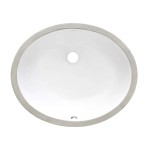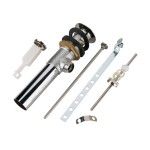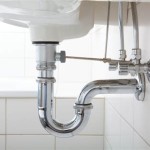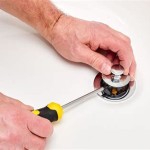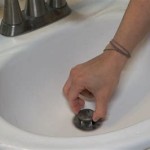How to Freshen a Sink Drain
A smelly sink drain can be a real nuisance, affecting the overall cleanliness and pleasantness of your kitchen or bathroom. Fortunately, freshening a sink drain is a relatively simple process that can be achieved using readily available household items. This article will guide you through the steps of effectively freshening your sink drain and eliminating unpleasant odors.
Step 1: Identify the Source of the Odor
Before tackling the odor, it's crucial to understand its source. Sink drain odors typically arise from a buildup of organic matter, such as food particles, hair, and soap scum, that decompose and release foul-smelling gases. These materials can accumulate in the drainpipe itself, the drain trap (a curved section designed to prevent sewer gases from entering your home), or even within the garbage disposal unit (if present).
To pinpoint the location of the odor, carefully observe the following:
- Drainpipe opening: Look for any visible debris or discoloration around the drain's opening.
- Garbage disposal: If you have a garbage disposal, check for any noticeable debris that might be causing the odor.
- Other drains: If multiple drains in your home are emitting odors, the source could be a broader plumbing issue.
Step 2: Flush the Drain with Hot Water
A simple yet effective way to remove loose debris and freshen the drain is to flush it with hot water. Start by running hot water from the tap for several minutes. This helps loosen any accumulated particles and wash them down the drain. You can enhance this method by adding baking soda or vinegar to the water. Baking soda is a mild abrasive that can help break down grease and grime, while vinegar's acidity can neutralize odors.
Here's a simple procedure:
- Pour a cup of baking soda down the drain.
- Follow it with a cup of boiling water.
- Wait for 10-15 minutes.
- Pour a cup of vinegar down the drain.
- Let it sit for 10-15 minutes.
- Flush with boiling water.
This combination of baking soda and vinegar can be particularly effective for removing grease and grime buildup.
Step 3: Use a Drain Cleaner
If the odor persists after flushing with hot water, you may need to use a drain cleaner. However, it's essential to choose a safe and effective drain cleaner. Avoid using harsh chemical cleaners that can damage your pipes or release harmful fumes. Opt for environmentally friendly drain cleaners that are formulated with natural ingredients like enzymes or bacteria.
Follow the instructions provided on the drain cleaner product label carefully. Ensure proper ventilation in the area while using any drain cleaner. After applying the cleaner, allow it to sit for the recommended time before flushing the drain with hot water.
Step 4: Clean the Drain Trap (If Applicable)
In some cases, the odor originates from the drain trap, which is a curved pipe that prevents sewer gases from entering your home. Cleaning the drain trap can eliminate the odor and prevent further buildup. To clean the trap, you will need to disconnect it from the drainpipe. This process typically involves loosening a nut or bolt that secures the trap to the pipe. Once disconnected, carefully pour out the contents of the trap into a bucket and rinse it with hot water. Remove any accumulated debris and reattach the trap to the drainpipe.
Step 5: Preventative Measures
To prevent future drain odors, consider implementing the following preventative measures:
- Regular flushing: Flush your drain with hot water regularly, especially after using the sink for cooking or washing dishes.
- Avoid pouring grease down the drain: Grease can solidify in the drainpipe and trap other debris, leading to odor issues. Instead, dispose of grease in a container and discard it properly.
- Use hair catchers: Hair can quickly accumulate in the drain, blocking water flow and creating an unpleasant odor. Install a hair catcher in the drain to collect hair and prevent it from entering the drainpipe.
- Consider using a drain protector: Drain protectors are mesh or plastic covers that sit over the drain opening. They prevent debris from entering the drainpipe and can help reduce the buildup of organic matter.
By following these steps, you can effectively freshen your sink drain and eliminate foul odors. Remember to address the source of the odor, use safe and effective cleaning methods, and implement preventative measures to maintain fresh and pleasant-smelling drains.

How To Unclog Clean A Bathroom Sink Drain 3 Methods

Baking Soda Vinegar The Best Home Remedy For Smelly Drains Anchor Plumbing Service

Foam Drain Cleaner Pipe Dredge Deodorant Sink Powerful And Hair Clog Remover For
:max_bytes(150000):strip_icc()/__opt__aboutcom__coeus__resources__content_migration__mnn__images__2018__08__sink_drain-351af8e441034f319fe07f00c091d8b6.jpg?strip=all)
How To Clean A Smelly Drain Naturally

How To Clean A Kitchen Drain Easy Methods

How To Clean A Stinky Sink Drain

How To Get Rid Of A Smelly Sink Drain 10 Ways Proven Work

How To Clean A Smelly Sink Drain The Organization House

How To Clean A Smelly Drain Easy Diy Fixes For Foul Odors

How To Remove Sink Odor With Baking Soda And Vinegar Zep Drain Defense Prevent
